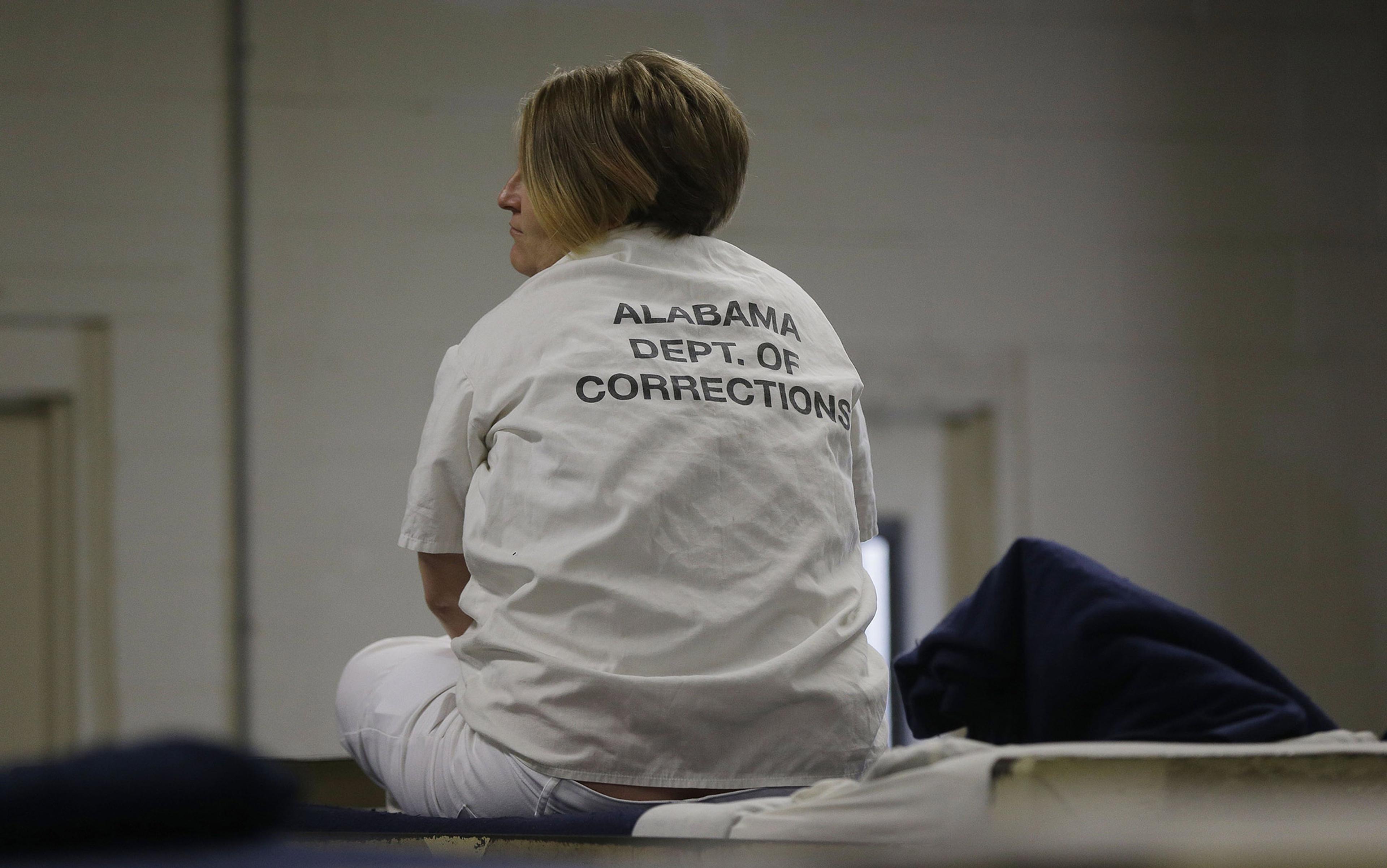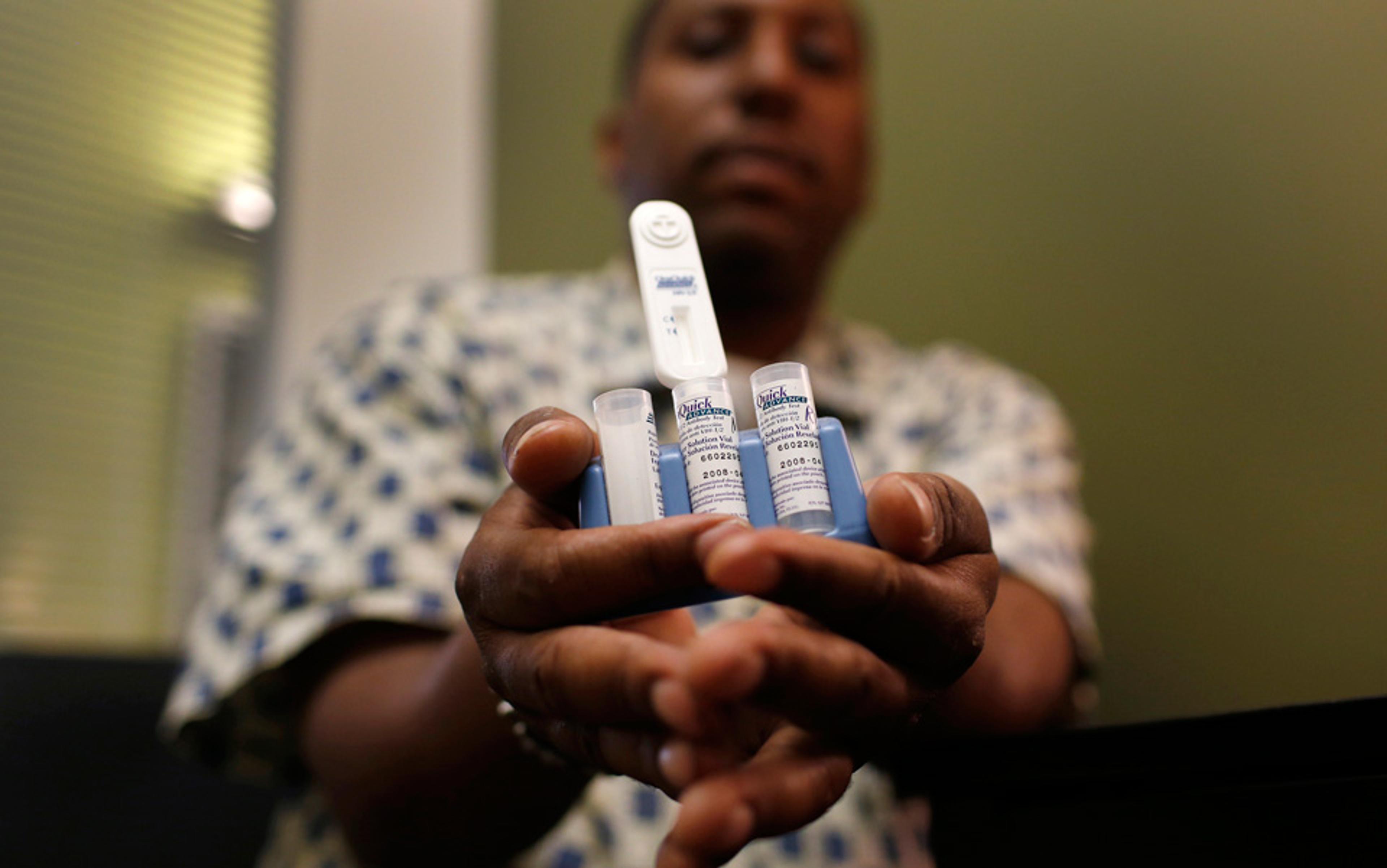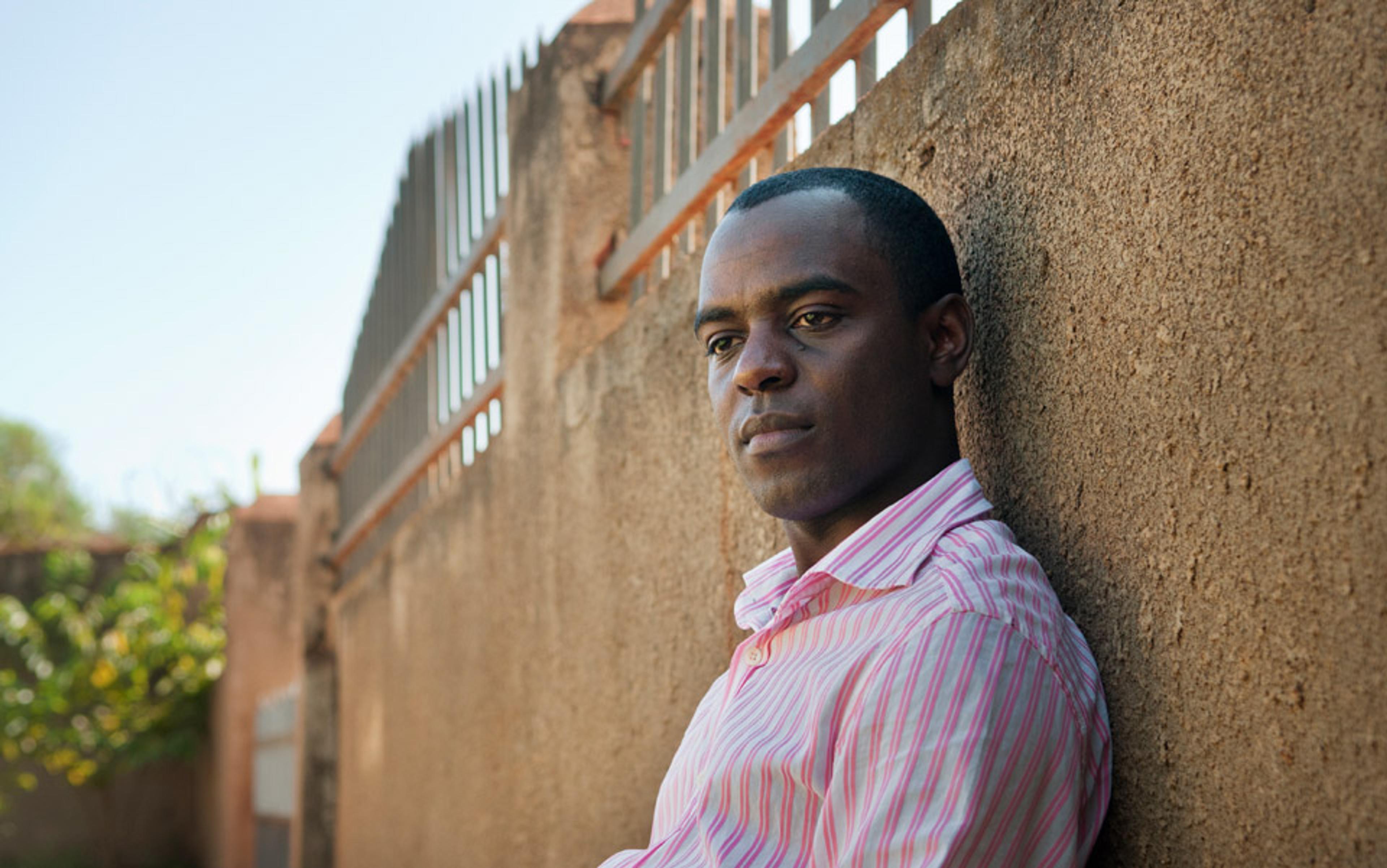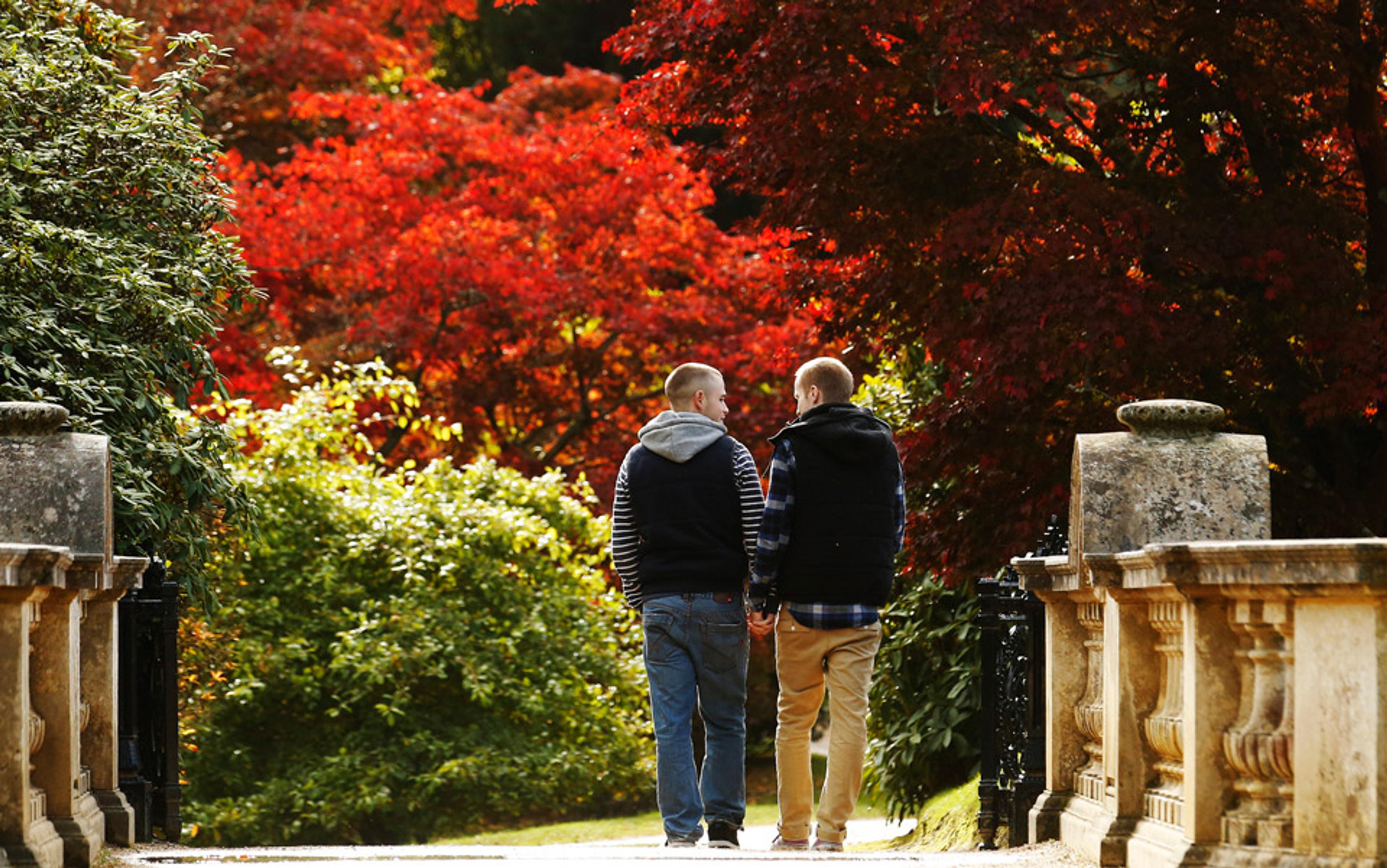My friend Dave died twice. He died the way we fall asleep and fall in love, lose our money or lose our way: slowly and then all at once. He died of HIV of the body. And he died of HIV of the mind.
A Jersey kid who loved trains and got a job as a subway conductor, Dave was infected with HIV at age 20 in the early 1980s, just a few months after he came out. His response was to simply slam the door shut on sex. He became celibate. Antiretroviral drugs saved him – but back then they were monotherapies to which his virus inevitably evolved resistance.
By age 40, Dave was living in a posh section of midtown Manhattan, where many HIV-positive individuals had been granted subsidised apartments. You could see the ghost of good looks in his face, and a goofy sweetness that made him almost universally likeable. Then he fell in love – although chaste love – with a twentysomething straight kid. To the kid, Dave was the patient father-figure he’d never had. To Dave, this was ardour long deferred. Within a year, their friendship had splintered apart, wrecked by its incompatible needs. There was a brutal argument. As his friend walked out the door, he tossed back an insult: ‘I hope you die of that damn HIV.’
Dave looked down as he repeated those words to me. ‘I would never kill myself. But if I die of HIV, it might be a relief.’ Not long after, Dave got a case of resistant thrush. His oesophagus was inflamed and it hurt to eat. The early HIV drugs that had saved him had led to resistance to similar drugs now available for triple therapy, and his viral counts soared. A new intravenous antifungal, caspofungin, was available. He tried it for one day and then walked out of the hospital. He went home. And within weeks he was dead.
Dave died of a virus but I think he also died of loss and shame. He died slowly from the slings and arrows of stigma, from searing grief, from the daily disconnect of viewing one’s most intimate act as a potential lethal weapon. He suffered all the conflicting emotions both the straight and gay worlds harboured about HIV. And then one day, he just died.
That was then, this is now. Things have changed, right? Apparently not. In spite of extraordinary research breakthroughs and new effective treatment and prevention, the HIV epidemic continues to chug along. There are 50,000 new HIV infections a year in the United States – a steady flow unchanged since 2007 (the peak was 130,000 a year in the mid-1980s). And the reasons are not so much medical as they are behavioural, psychological and cultural.
The US Centers for Disease Control and Prevention (CDC) recently announced that if HIV infections continue to rise at current rates, half of young gay men will have HIV by the age of 50. Infections have been increasing among young men who have sex with men, especially young, black men. Emory University in Atlanta, Georgia, reports that a black gay or bisexual man in Atlanta who becomes sexually active at age 18 now has a 60 per cent chance of becoming HIV-positive by the time he turns 30. Nationwide, condom use is steadily dropping and unprotected anal sex is increasing. New HIV infections have proved similarly resistant in Europe and Asia. There are still 6,300 new HIV infections a day worldwide.
The epidemic continues despite remarkable good news out of the 21st Conference on Retroviruses and Opportunistic Infections (CROI), held in Boston this year: TaSP, or Treatment-as-Prevention, works. A two-year study, called PARTNER, followed 800 couples, both gay and straight, where one was HIV positive and one was HIV negative. All admitted to inconsistent condom use. With a total of about 45,000 acts of penetrative sex, not one HIV-positive individual on the therapy transmitted the virus to a partner. PrEP, or Pre-Exposure Prophylaxis works. If you’re HIV negative and engaging in unprotected sex, one pill daily of the anti-HIV medication Truvada prevents transmission of the virus. Taken daily, it slashes risk of HIV transmission by at least 96 per cent. PEP, or Post-Exposure Prophylaxis, works. The therapy consists of two to three antiretroviral drugs taken for 28 days, within 72 hours of a possible exposure. In a case-control study of needlestick injuries to health-care workers, PEP decreased risk of HIV by 81 per cent.
Sounds simple, yet triumphing over HIV infection has unleashed decades of confused emotions and conflicts, making it surprisingly difficult to stamp out the disease.
Take the prophylactic treatment, PrEP. Even though PrEP has been approved in the US since 2012, fewer than 1,800 individuals are taking it. One gay man told me: ‘If we could time-travel back to the darkest plague days, everybody would be on PrEP. But in 2014? It’s just not happening.’
One reason is the worry that PrEP might replace condoms, ushering in a new era of unbridled bacchanalia and increasing other sexually transmitted infections. Back in the plague days, fear of AIDS infected us all, gay and straight, and shut down most of the establishments catering to gay sex far more effectively than police raids. Now, in a more relaxed era, when HIV infection is regarded as a treatable, chronic illness, risky behaviour is increasing – and in some quarters the backlash against risk is vitriolic.
That vitriol spews out of the great viral divide – the chasm between the HIV-positive and the HIV-negative that appeared with the infection itself. Some men have chosen to ‘sero-sort’, or partner only with men who have the same HIV status as themselves. Name-calling is intense. Men who advocate regular condom use are sometimes scoffed at as ‘condom Nazis’, while men who enjoy condomless sex are labelled ‘barebacking sluts’.
‘We are still living on a battleground, wondering who is responsible and who is a whore, who gave me HIV and didn’t tell me,’ says Mark King, the HIV-positive author who writes the popular, outspoken blog My Fabulous Disease. ‘To embrace treatment as prevention, we have to get past all that.’
Michael Weinstein, the head of the largest HIV/AIDS health care organisation in the US, the Los Angeles-based AIDS Healthcare Foundation (AHF), has joined the fray, calling Truvada a ‘party drug’. In protest, a movement has begun with the Twitter hashtag #removeWeinstein. But Weinstein, like other men of his generation, lived through the worst of the plague. They created AHF in the 1980s to care for people in the last, gruesome stages of AIDS – covered with lesions, dying of pneumonia, and wasted to mere skeletons. Even though HIV has shrunk from monster to mere illness, they still support condoms as mandatory gear.
The world has changed since then. Today, instead of police raids on gay establishments, we have legal gay marriage. In 17 states, a gay man can have the proverbial white picket fence of Andy Rooney’s America: he can walk down the street holding his husband’s hand.
Yet old stigmas are entrenched. If 17 US states have legalised gay marriage, 35 states and at least 66 nations have laws that criminalise exposing another person to HIV. In a stunning 2008 case, a man named Nick Rhoades was convicted of criminal transmission of HIV in Iowa after a one-night hookup, even though he was on medication that rendered his viral load undetectable, he used a condom, and his accuser did not contract HIV. He served 18 months in prison, and the label of criminal sex offender is on his police record for life.
Positive or negative? Marriage or jail? Which is your fate, and what does it mean? Today’s gay men are fed up with everlasting stigmas and understandably resent the burden of medical risk they must bear.
Technology has made that risk-taking easier than ever. Today, men seeking sex with men can arrange instant hookups through apps such as Grindr and Manhunt. They might identify themselves upfront as HIV positive or negative (Grindr has ‘tribes’, for instance, and one is ‘poz’) and on some apps, you can check PNP (for ‘party and play’, which indicates the use of increasingly popular recreational drugs such as crystal meth).
Some admit to simply wanting to get the virus so they can stop worrying and just have sex with other HIV-positive men. At the very extreme end of this is a behaviour called ‘bug-chasing’, where men seek out HIV-positive ‘gift-givers’ to infect them. Damon Jacobs, a 42-year-old licenced family and marriage counsellor in New York City, says that he went on PrEP when he found himself with exactly those thoughts. ‘A few years ago, after a break-up, I was getting back into the world of dating, and condoms were not as popular as they’d once been. I was seeing people with HIV living and thriving. I found myself thinking: if I don’t use condoms and I get HIV, well, maybe it won’t be the worst thing in the world. Those thoughts freaked me out. It wasn’t if I get HIV, it was when.’
‘Gay sex is the naughty sex. It’s the sex for which you don’t take your partner home to sleep under your parents’ roof’
Some see HIV-positive status as a coveted state. Since positive men on antiretroviral therapy are virtually unable to transmit the disease, some are choosing to partner only with such men. ‘Limit your condomless sex to poz guys with undetectable viral loads, and avoid condomless sex with casual negative partners,’ advises Marc André-LeBlanc, a Canadian HIV/AIDS activist, on a Canadian online HIV magazine called Positive Lite. Undetectable has become the new negative.
The stigma surrounding anal sex, perhaps more than anything, explains the rise of HIV of the mind. Studies have suggested that anal exposure to HIV poses 18 times more risk for the receptive partner than vaginal exposure. Yet, says Jacobs, ‘pleasurable anal sex is simply taboo in this society’. David Stuart, a substance use adviser at an HIV and sexual health clinic in London, puts it this way: ‘Gay sex is the naughty sex. It’s the sex for which you don’t take your partner home to sleep in your historical bedroom, under your parents’ roof.’
But if no one admits to the potent brew of feelings anal sex arouses, then medicine can’t do its job. The stigma around anal sex plays out in the doctor’s office, where acceptance and compassionate care are necessary to stem the epidemic. An anonymous college student told his story on a site called My PrEP Experience. After two boyfriends had cheated on him, and one had snuck a condom off during sex, the student wanted a pharmaceutical brand of protection. He wanted PrEP. ‘We don’t prescribe this to people like you,’ he was told by a physician. ‘I felt like she [the doctor] had already labelled me as whore and, as far as she was concerned, the appointment was over.’ Eventually, the prescription was written by the doctor’s boss and, after jumping through some administrative and insurance hoops for a few weeks, the student went to receive his pills. He was the first in his town of 130,000 to be given PrEP. It takes a confident young man to persist in spite of that kind of humiliation.
Todd Heywood, an HIV-positive activist who lectures on safer sex practices to gay men at universities around Michigan, told me it is very tough for young men to talk to doctors about condom ‘slip-ups’ or ask for an anal swab for sexually transmitted diseases (STDs), and such swabs are not FDA-approved anyway. One young man had to ask Heywood to advocate for him with a doctor at the county health department because they were refusing to swab for anal chlamydia and gonorrhoea. He had both.
And so, many men just avoid the matter of HIV and STDs entirely. Robert Grant, a senior investigator at Gladstone Institutes in San Francisco, was surprised when he first recruited young men for the groundbreaking study on Truvada. ‘One third had never had an HIV test. We had to test them, of course, and 10 per cent were already positive and didn’t know it. That conversation where you say: OK, take this test, and here are the things you can plan to do to stay HIV negative, that isn’t happening enough.’
When the conversation does happen, it’s beneficial. PrEP currently requires regular follow-up with your doctor – and that creates a structure in which all kinds of concerns can be discussed. During check-ups, individuals can get tested for other sexually transmitted infections. John Sewell, an HIV negative man on PrEP, told me: ‘The opportunity to talk to a doctor regularly, and to receive counselling about my decisions, is as valuable to me as PrEP, if not more so.’ His experience is backed up by the first PrEP trial, where just participating in a study and being counselled decreased risky behaviour.
As Rupert Whitaker, MD, a British psychiatrist and specialist in behavioural medicine, puts it, ‘Men today must think about far more than condoms. They must learn the meaning of undetectable viral loads, the potential risks and rewards of PrEP, the possibility of living a long life on HIV drugs.’ Stopping people from dying is not enough. PrEP is not enough. The actual behavioural drivers of illness and wellness must be openly discussed.
There aren’t many primary care doctors who feel confident opening up a conversation with a gay man about barebacking, online apps, anal chlamydia, and a treatment plan for protection. And how many gay men walk into their primary physician’s office comfortably prepared to discuss all those concerns?
And so, in 2014, in the developed world, HIV infections continue unabated at crushing expense to society because of HIV of the mind. I do not mean to imply the existence of a scarlet H unique to gay male psychology. No, I mean the incredible complexity around being gay in 2014 – when HIV is treatable and preventable, but profound vulnerability to infection remains. I refer to the whole welter of confusing feelings and polarised messages that gay men still shoulder, often invisibly, and that the straight world still struggles with, too. Silence equals death. That was the brilliant mantra coined by the original AIDS activists, the ones who mobilised all of us to action. But there is still a penumbra of silence around gay life, even in the most ‘out’ gay man’s heart.






